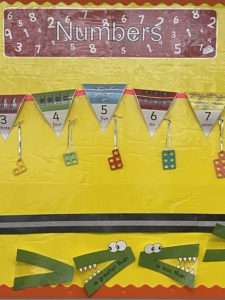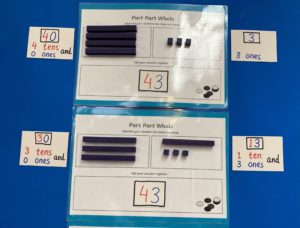 Maths Statement of Intent
Maths Statement of Intent
Mathematics is not about numbers, equations, computations, or algorithms: it is about understanding. –William Paul Thurston
Mathematics is an interconnected discipline that is essential to our everyday life. It is a subject that supports learning across the curriculum and is critical for our understanding of other subjects especially science and technology. A high quality math education provides the foundation of a deeper understanding of the world around us, it helps us to think creatively and critically, reason logically and solve problems. It is a subject that knows n o barriers according to David Hilbert ‘Mathematics knows no races or geographic boundaries; for mathematics, the cultural world is one country’. A child who joins school with little or no knowledge of English will still be able to understand the basic concepts of mathematics.
o barriers according to David Hilbert ‘Mathematics knows no races or geographic boundaries; for mathematics, the cultural world is one country’. A child who joins school with little or no knowledge of English will still be able to understand the basic concepts of mathematics.
At Holly Park we believe all children can achieve in mathematics and so we teach for a deep and secure understanding of the subject. Our teaching is underpinned by the ‘mastery’ approach. Children learn the content from their year group only. They spend time learning the content and applying it in multiple ways. We provide different opportunities and challenges for the children to use their knowledge to reason and solve different types of problems showing their ideas in different ways and choosing from a range of resources. Children are also challenged to show their thinking in different ways using unfamiliar resources.
Our goal is to foster a positive ‘can do’ approach eliminating the ‘I’m just not good at maths’ attitude. Every child is encouraged to have a go and believe the fact that ‘We can all do Maths’. Even if they do not get their desired result they are able to identify their mistakes and learn from them. They are encouraged to have ownership of their ideas and the confidence to share them. Making mistakes and trying sophisticated challenges helps to develop character, including resilience, confidence and independence. Children who are resilient contribute positively to the life of the school, their local community and the wider environment.
We aim for every pupil to
- become fluent in the fundamentals of mathematics, through varied and frequent practice with increasingly complex problems over time, so that pupils develop conceptual understanding and the ability to recall and apply knowledge rapidly and accurately.
- reason mathematically by following a line of enquiry, conjecturing relationships and generalisations, and developing an argument, justification or proof using mathematical language.
- solve problems by applying their mathematics to a variety of routine and non-routine problems with increasing sophistication, including breaking down problems into a series of simpler steps and preserving in seeking solutions.
Mathematical vocabulary is an essential tool for mathematical learning. Children communicate their thoughts, justify their ideas, argue and prove their reasoning using mathematical vocabulary. They are introduced to the appropriate vocabulary at the stage it is required in their learning to ensure progress in maths. Children are encouraged to use stem sentences with the correct mathematical vocabulary in the lessons in order to consolidate their learning.
Here is the maths national curriculum for each year group:
- Maths National Curriculum – Year 1
- Maths National Curriculum – Year 2
- Maths National Curriculum – Year 3
- Maths National Curriculum – Year 4
- Maths National Curriculum – Year 5
- Maths National Curriculum – Year 6
 Progression of skills in maths
Progression of skills in maths
Here are the progression of skills in maths documents:
- Addition and Subtraction
- Algebra
- Fractions
- Geometry Properties of Shapes
- Geometry-Position-Direction and Movement
- Measurement
- Multiplication and Division
- Place Value
- Ratio and Proportion
- Statistics
Our calculation policy can be found on this page.
Holly Park Maths Day
At Holly Park as well as wanting our children to be numerate, we also think it is important to ensure the maths curriculum is diverse. We also want to make it relevant and practical and show children how it fits in to the wider world in which we live. An annual maths day is a great way to focus on this. Today we had our annual Holly Park Maths Day. The day was in two parts. One part of the day was cross curricular and focused on maths and art. We want children to understand the part maths plays in other subjects especially the ones that we would not normally associate it with. Classes looked at how artists use maths in their art work and examples of famous art created with maths. Teachers chose an artwork or artist and looked at the maths used – inspiring children to create a piece of their own art in that style. For the second part of the day children looked at real life experiences using maths, how maths is used in the world of work and at the work of a famous mathematician.
Nursery
The nursery have maths going on in all areas of their provision today. There are lots of Number Blocks activities and Number Blocks toys out. The children have used balance scales to weigh vegetables linked to the work they have been doing around the Peter rabbit story. They have also been making vegetable soup – counting the vegetable pieces and the spoons etc
Reception
Reception have looked at the artist Bridget Riley who uses lots of repeated patterns in her art work. The children have had opportunity to do lots of work around the classroom wo do with repeated patterns. They have also talked about how maths is used in everyday jobs.
Year 1
Year 1 have been looking at Islamic art which uses lots of shapes and spaces. They have been able to create some art of their own in this style. They have also looked at the mathematician Rachel Riley.
Year 2
For Maths Art, Year 2 looked at shapes and symmetry through the work of Ndebele art by Esther Mahlangu (South African artist) They made their own symmetrical pictures. The mathematician they looked at was – Katharine Johnson who is a navigator and has done work with NASA. Looking at maths in the workplace they watched videos about a Cab driver using mental addition and subtraction, a theatre supervisor using written addition and subtraction, a climatologist counting in 10s, a town planner describing 2D and 3D shapes in their work, a structural designer – making 2D and 3D shapes and a greengrocers – doubling and halving.
Year 3
In terms of maths and art, Year 3 looked at Parabolic curves and tessellation. The mathematician they looked at was Alan Turing and they did an activity on cryptography linked to Alan Turing. In terms of maths in the world of work they watched videos that showed a vet – choosing correct measuring equipment, a drummer – using fractions a cab driver doing mental addition/subtraction, a baker using division into equal parts, a volleyball coach finding remainders and a Green grocer doubling and halving.
Year 4
The artist that Y4 looked at was Kristin Farr. She is an American artist who uses symmetry and shapes in her work. Their art work involved fractions and mixing a colour palette. Year 4 looked at the mathematician Bejamin Bannekar self-taught African American mathematician. Accredited with making the first wooden clock that kept accurate time. Accurately predicted eclipses and weather patterns. Within the real world, Year 4 watched a video about an events planner who used maths to plan a children’s party. They then used this idea to do some planning for their upcoming Y4 pyjama party.
Year 5
Year 5 have looked at the work of the artist Mondrian who uses lines and shapes. This has connected with work they have also done on fractions. They have continued the work on fractions looking at pizza toppings.
Year 6
Muhammad ibn Musa al-Khwarizmi was the Year 6 mathematician. They watched a video about him and were able to link this to computing that they are about to start on algorithms. Using maths in the real world, they looked at ratio and proportion. They watched some videos of ratio being used in the real world e.g a paint mixer in a DIY store and a hairdresser mixing hair dye. They also did some hands on practical work designing a fruit punch using ratios of different fruit juices. For maths and art they looked at geometric line art. They created some geometric line art having been given a list of criteria they must include (acute angle, a rhombus, etc).
